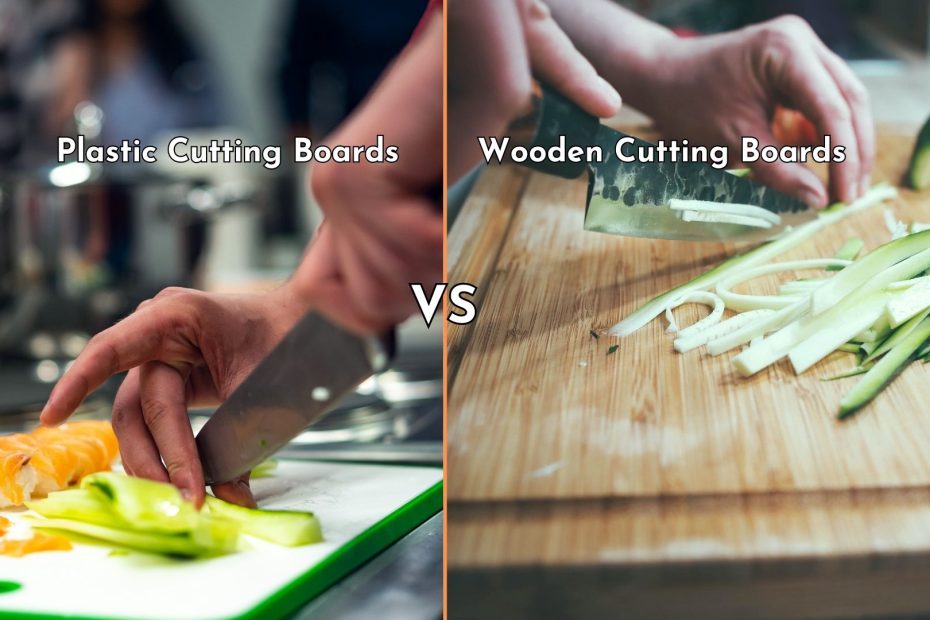In every kitchen, a reliable cutting board is an essential tool for prepping ingredients with precision. While there are various options available, two popular choices stand out: wooden and plastic cutting boards. Each has its own set of advantages and disadvantages, catering to different needs and preferences. In this article, we will delve into the pros and cons of wooden and plastic cutting boards, ultimately determining the best overall option for your culinary adventures.
Wooden Cutting boards
Wooden cutting boards have been a staple in kitchens for centuries, prized for their natural beauty and functionality. Let’s explore their pros and cons.
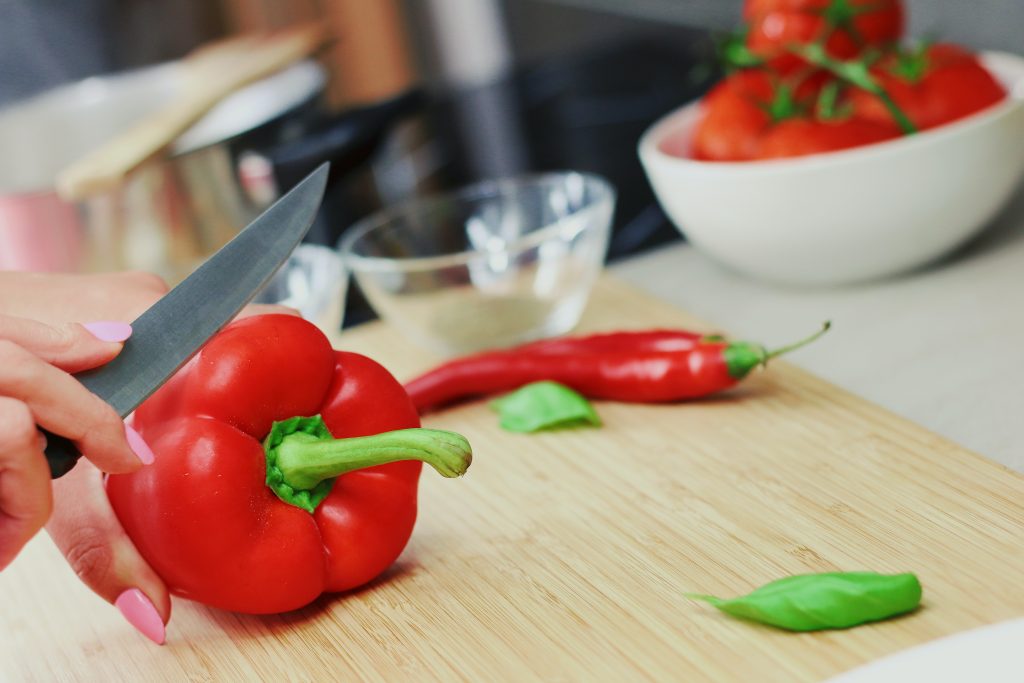
Pros:
- Knife-Friendly Surface: Wooden cutting boards offer a softer surface that is gentle on knife blades, reducing dulling and maintaining sharpness for longer periods.
- Natural Antibacterial Properties: Studies have shown that certain wooden materials, such as bamboo and maple, possess natural antimicrobial properties that can inhibit bacterial growth.
- Aesthetic Appeal: Wooden cutting boards add a touch of warmth and elegance to any kitchen, elevating the visual appeal of your culinary space.
- Durability: High-quality wooden cutting boards can last for years, provided they are properly maintained and cared for.
Cons:
- Porous Surface: Wood is naturally porous, making it more prone to absorbing moisture and odors. Proper cleaning and maintenance are crucial to prevent the growth of bacteria and mold.
- More Maintenance: Wooden cutting boards require regular oiling and seasoning to prevent cracking, warping, and drying out.
- Restricted Usage: Wooden cutting boards are not suitable for cutting raw meat, poultry, or fish, as bacteria from these foods can seep into the pores, increasing the risk of contamination.
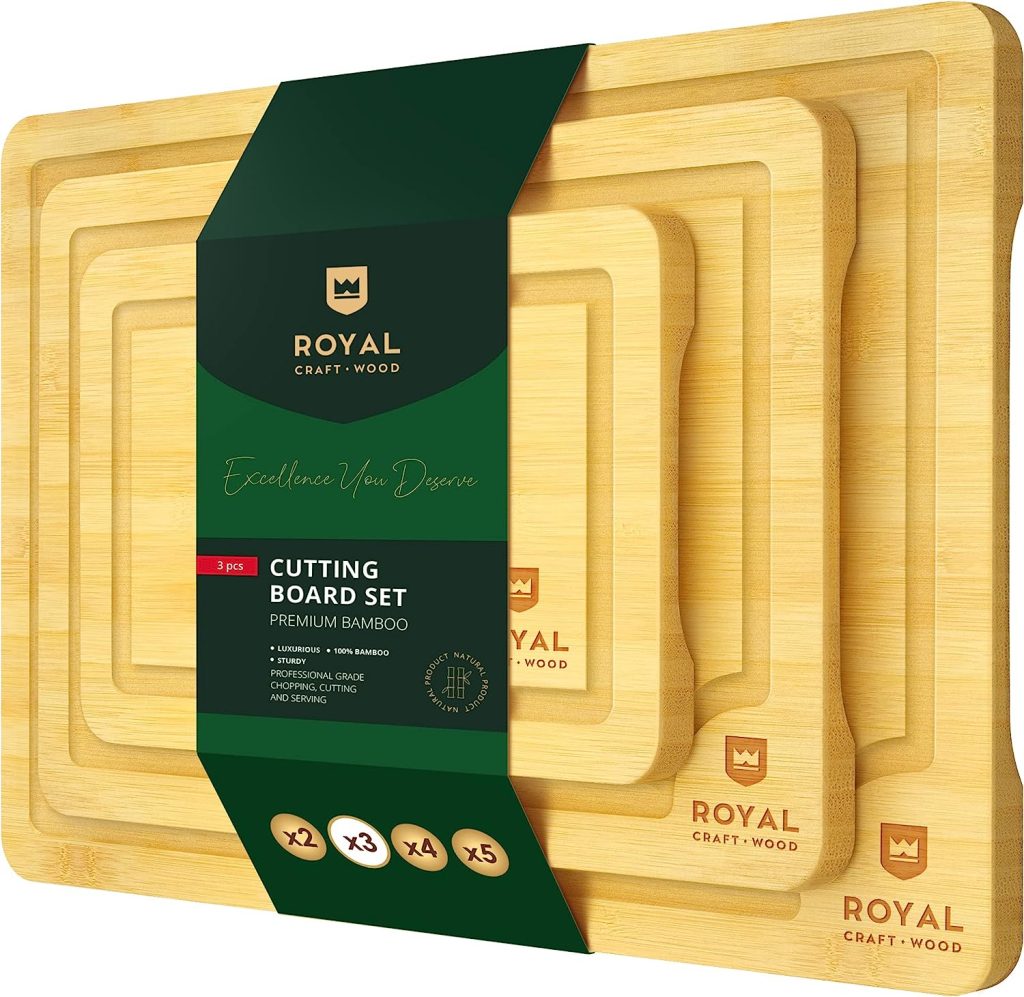
Royal Bamboo Cutting board set (3pcs)
Three perfectly sized cutting boards, with a knife safe gentle surface, and juice grooves to catch any runoff
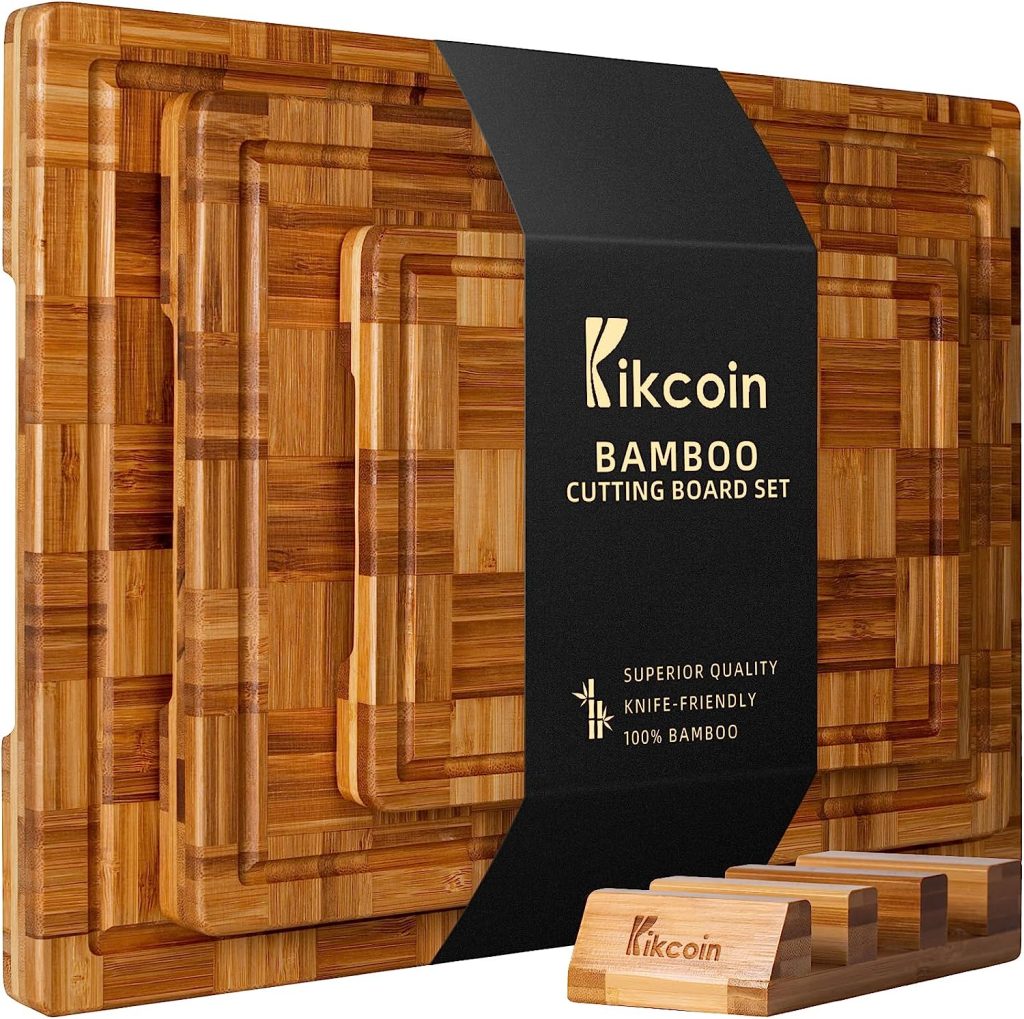
Kikcoin Bamboo Cutting board set (3pcs)
Three large bamboo cutting boards, with a knife safe gentle surface, comes with bamboo cutting board rack
Plastic Cutting Boards
Plastic cutting boards gained popularity due to their affordability and ease of maintenance. Here are the advantages and disadvantages of plastic cutting boards.
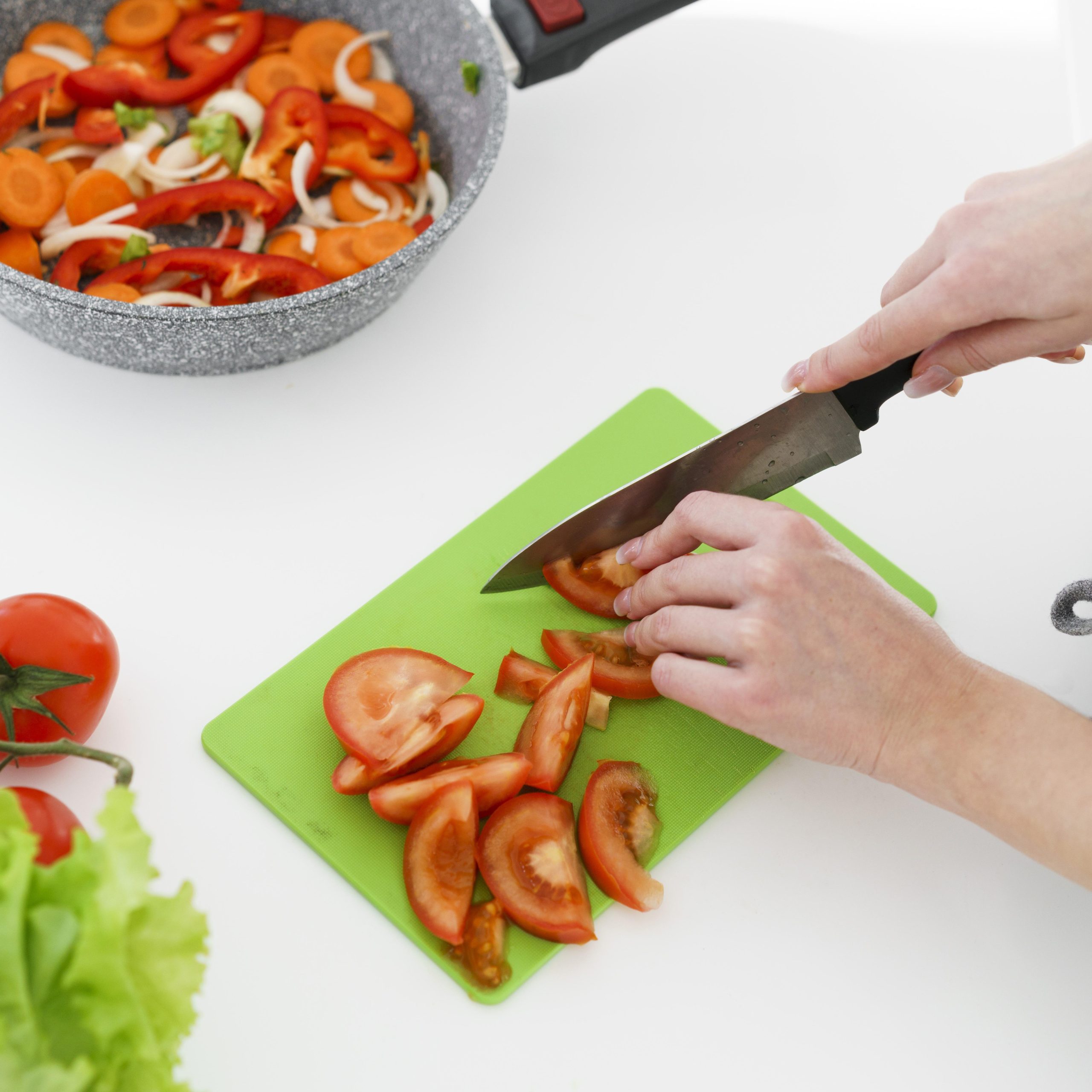
Pros:
- Easy to Clean: Plastic cutting boards are non-porous, making them highly resistant to stains, odors, and bacterial absorption. They can be easily cleaned in the dishwasher.
- Versatile: Plastic cutting boards are suitable for a wide range of food preparation, including raw meat, poultry, and fish, as their non-porous surface minimizes the risk of bacterial contamination.
- Lightweight and Portable: Plastic cutting boards are lightweight, making them convenient for transportation and outdoor use.
Cons:
- Knife Damage: Plastic cutting boards are harder on knife blades, leading to quicker dulling and the need for more frequent sharpening.
- Unsightly Wear and Tear: Over time, plastic cutting boards can develop deep grooves and knife scars, providing ideal environments for bacteria to thrive.
- Shorter Lifespan: Plastic cutting boards are generally less durable than their wooden counterparts and may need to be replaced more frequently.
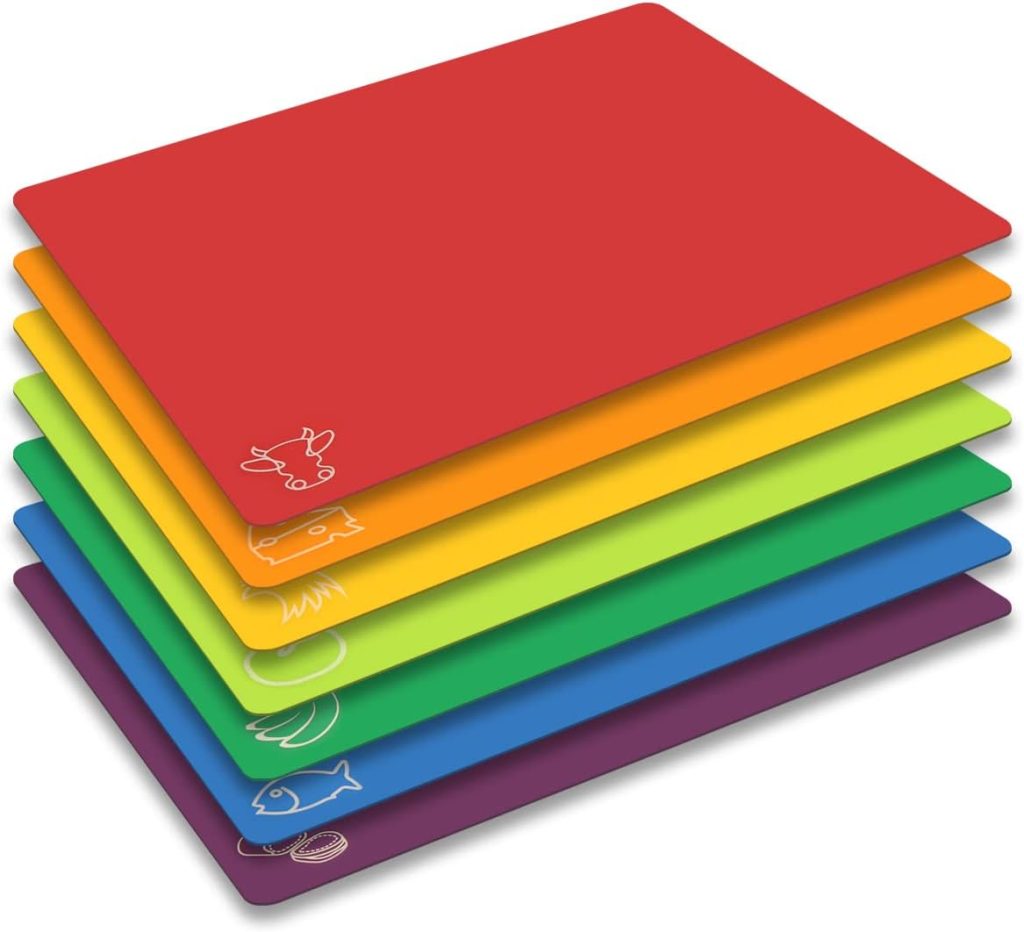
Flexible plastic cutting board mats (7pcs)
Multi colored cutting board set with food icons, anti-skid back and dishwasher safe
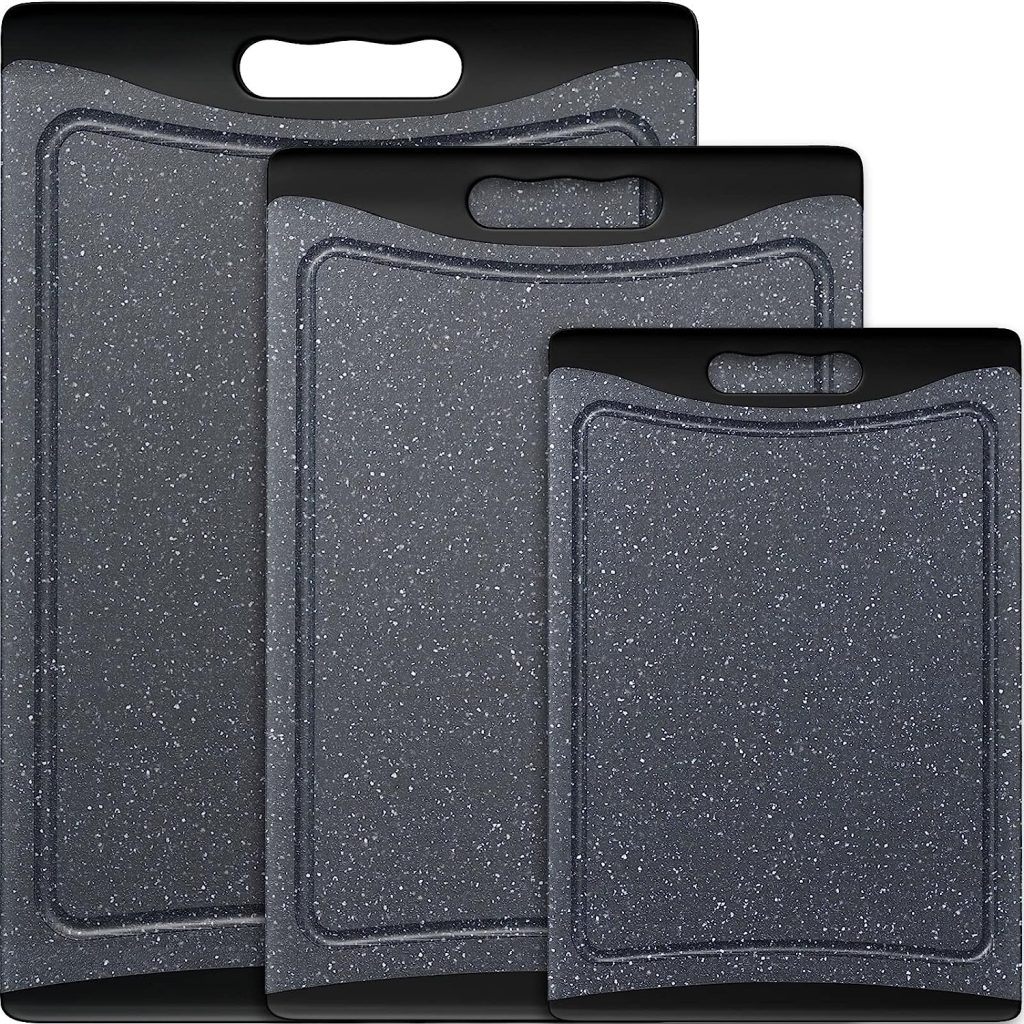
Dark grey plastic cutting board set (3pcs)
High density cutting boards, dishwasher safe, with a built in juice groove
Conclusion
After careful consideration of the pros and cons, it becomes evident that wooden cutting boards and plastic cutting boards each have their strengths and weaknesses. Wooden cutting boards excel in their knife-friendly surface, natural antibacterial properties, and long-lasting durability. However, they require more maintenance, are more prone to absorbing odors, and have limitations when it comes to cutting certain foods.
On the other hand, plastic cutting boards are highly practical due to their easy maintenance, versatility, and resistance to bacterial absorption. Nonetheless, they tend to damage knives more quickly and have a shorter lifespan.
In the quest for the best overall cutting board, considering the balance between functionality, aesthetics, and hygiene, the wooden cutting board emerges as the superior choice. With proper care and regular maintenance, a high-quality wooden cutting board can provide a reliable and timeless companion in your culinary journey, combining functionality with timeless elegance.
Remember, regardless of your choice, it is essential to practice good food safety habits, such as regular cleaning, to maintain the integrity and hygiene of your cutting board.
